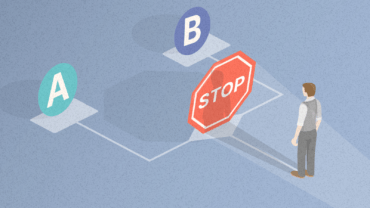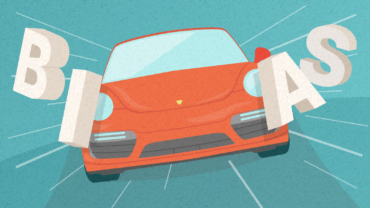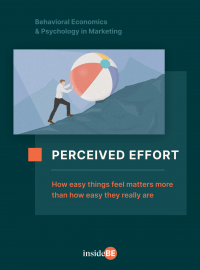The Biggest Mistakes Marketers Make According to Behavioral Experts

In their day-to-day practice, marketers often make mistakes that can easily be avoided. We asked seven behavioral economics experts what the biggest ones are in their opinion, and how to overcome them.
In this article, you’ll discover:
- How an e-shop increased its revenue by $300 million in a year;
- What the worst assumption marketers can make is;
- Why understanding the problem properly should always come before creating solutions;
- How understanding customers’ true motivations helped a fashion brand to increase conversions by 51%; and
- How to avoid rolling out solutions that seem like they make sense but can in fact hurt you.
InsideBE was founded with a single idea in mind – that Behavioral Economics can play a huge role in business. It can improve customer experience, increase sales, improve communication with customers, and above all, it can raise marketing to another level. At least, that would be the case if marketers were aware of the potential of BE. But often they are not.
So we asked behavioral experts to speak out about what they see as the biggest mistakes marketers make so that you can avoid them. Here they are.

Discover ground-breaking ideas and fascinating solutions.
1. Focusing on customers motivations and neglecting the barriers
“When you want your customers to do something, the first thing that comes to mind is motivating them,” says Matej Sucha, CEO of MINDWORX Behavioral Consulting. However, it’s not that simple, and if you put all your effort into increasing customers’ motivation, you may end up throwing money out of the window.
“Imagine you have a rocket and you want it to fly. If you simply add fuel it won’t help if the rocket is in the shape of a cube. You need to remove friction and make it aerodynamic,” adds Matej.
It’s the same thing with customers. It’s not enough to motivate them (add fuel), you need to remove all the reasons that are holding them back (friction). So instead of focusing on reasons why the customers should do something, marketers should concentrate on why they aren’t doing it already.
Choice Overload
Very often the barriers are psychological, such as uncertainties, high perceived effort, or too much choice. The first thing marketers must do is to identify these barriers and remove them. That’s exactly what one insurance company did, and it increased conversions by 300%.
2. Assuming that customers are rational utility maximizers
This one is the biggest according to Sam Tatam, Head of Behavioural Science at Ogilvy Growth & Innovation. The first thing every behavioral economics course teaches you is that people are irrational and rely extensively on heuristics when making decisions, instead of logically considering the cost and benefits of every option.
Sam says, “There’s an assumption that we can always educate people and that if we can frame our product to make it feel the best on 'logical metrics', we will win every time."
Believing that people are creatures of logic may lead marketers to try logical arguments to convince customers. As Sam puts it, “There’s an assumption that we can always educate people and that if we can frame our product to make it feel the best on ‘logical metrics’, we will win every time.”
Instead, marketers need to consider human psychology and all the cognitive biases that lead people astray when making purchase decisions. “By interrogating a problem through the lens of behavioral science, we can ensure we don’t fall into these same traps and over-invest in solving the wrong problem”, concludes Sam.
This mistake is nicely illustrated by Ogilvy’s own direct mail campaign case study. During this charitable campaign, Ogilvy tried to persuade people to donate more by a very logical argument – for every pound people gave to the charity, the government would contribute an extra 25 pence minimum.
And did it work? As Rory Sutherland puts it, “Did it bollocks?” It actually reduced the donation level by 50%.
On the other hand, behavioral solutions that didn’t make any logical sense at first glance, like stating that the envelope people could put the donation in was hand-delivered, using higher quality paper, and putting the flap of the envelope along the narrow edge, increased donations by 10% each.
3. Creating too general solutions instead of understanding customers and the specific situation
This is a big one, as three of the Behavioral economics experts agreed on it. Before creating a solution, one needs to understand the context in which the decisions happen.
According to Andrea Olsen, behavioral scientist and CEO of behavioral consultancy Pragmadik, “many organizations operate too abstractly without understanding or knowing how day-to-day interactions, operations, processes, and communications actually influence the business goals they look to achieve.”
To put it simply, they lack insights about the situation and about how the customer perceives the product in the situation. As a result, they rely on too general solutions. “They should focus on customer discovery, gain exposure to how customers or employees are experiencing something, and basically start the process of active learning at the ground level”, adds Andrea.
Kelly Peters, CEO, and co-founder of behavioral consultancy BEworks agrees and adds that marketers push for these solutions way too much. She says that “It runs the risk of overriding a better understanding of the problem. A lot of people do not take the time to understand the underlying mechanisms of a behavior or a problem. We should not override the need for better questions or better data”
This results in using traditional methods without re-evaluating them. “We need to go much deeper than a superficial understanding of what’s going on”, concludes Kelly.
"Organizations should focus on customer discovery, gain exposure to how customers are experiencing something, and basically start the process of active learning at the ground level”, adds Andrea.
Settling on too general solutions is no exception even among those marketers who are aware of what behavioral science is capable of. According to Delphine Dard-Pourrat, founder of Kensho Advisory, “Many people believe they can copy-paste a nudge and use it for their own business case”.
However, this is not how it works. Every situation is different and requires a specifically tailored nudge. Delphine makes it perfectly clear that “environment and context always matter and what works in one specific setting might not work or may even backfire in another one.”
4. Relying on social media data instead of doing customer research
Gathering social media data is pretty easy and no one in their right mind would tell you it’s a waste of time. It is certainly not. However, when you rely on it too much it can be misleading. It can tell you what your customers have done, but the reason why they did it will remain hidden.
Simon Moore, CEO of behavioral consultancy Innovationbubble has seen this with brands too many times. “If you bought jeans and then you get a lot of messages about jeans. But where are the t-shirts or jackets? Or you bought bananas and get discounts on them next time – but you might not like bananas. You were just making banana bread for your dad’s birthday.”
Knowing the reason why customers behave as they do can help marketers communicate with their target audience much more efficiently. That’s why proper customer research is a must.
Also, that’s why Innovationbubble spent 5 years developing the NEOPIC Archetype engine – a tool that allows them to understand customers’ true motivations and go way beyond conscious artificial responses.
Relying too much on social media can be misleading. It can tell you what your customers have done, but the reason why they did it will remain hidden.
As a result of this, in the case of one fashion brand, they were able to understand the motivations of customers’ online purchases, use this knowledge to create a behavioral segmentation that narrowed down the target groups from an initial 16 to just 3, and then communicate with them effectively. Check out how it helped them to boost the brand’s conversions by 51%.
5. Not testing a solution before rolling it out at scale
It often happens that marketers are so satisfied with their idea that they roll it out on a great scale right away. Why not? It’s well thought through, they worked hard on it, and they spent countless hours working on every detail. Plus, it makes sense.
According to Charlotte Blank, Chief Behavioral Officer at Maritz, this approach won’t take you very far. “Without a control group, they’ll never know whether or to what extent their idea worked!” says Charlotte – a mistake she has experienced marketers making too many times.
And not only that. It may have the exact opposite effect to the one you might expect, meaning you would have been better doing nothing at all. Remember the Ogilvy charitable campaign from earlier in this article? If they had rolled out the logical solution without testing more options, the results would have been catastrophic.
You always need to compare your solution to at least a control group (people who are not exposed to any intervention), and ideally to test more than one solution to know which will work best and if it was effective at all.
The importance of testing also proved to be crucial in a project by MINDWORX Behavioral Consultancy. Every year there is a charitable campaign in Slovakia called Daffodil Day. Thousands of volunteers go out on the streets and help raise money for those suffering from various oncological illnesses.
MINDWORX teamed up with a telco operator who offered to send their clients tens of thousands of fundraising text messages persuading them to donate money. For customers to donate, all they needed to do was to reply with an empty message.
They tested multiple texts messages using various behavioral economics principles nudging people to donate and compared it with a control group (who received the standard text message without any behavioral nudge).
What they found was surprising. The good news was that one message performed better when compared to the control group and increased conversions by 55%. However, the other 2 messages using social proof (which they had put a lot of trust in) performed worse than the control one.
The thing is, even though behavioral science provides us with great knowledge about human behavior, we are still dealing with humans – creatures too complicated to be 100% sure that our solutions will work right away. That’s why testing is necessary.
Key takeaways:
- Marketers should focus on what’s holding their customers back, instead of simply trying to motivate them. There is often a reason why they don’t act, and this can easily be removed.
- Customers are not rational. They rely on heuristics and fall to cognitive biases. That’s why marketers shouldn’t rely too much on solutions purely because they make logical sense.
- Before creating a general, “proven” solution, marketers need to properly understand the customers and all the details of their situation in order to customize the solution.
- Knowing what customers are doing is not enough. Marketers need to know why they are doing it. That’s why proper customer research is a must.
- Testing more than one solution and comparing it with a control group before rolling it out on a large scale is essential to find out if the solutions even work. This can save companies a lot of resources.






